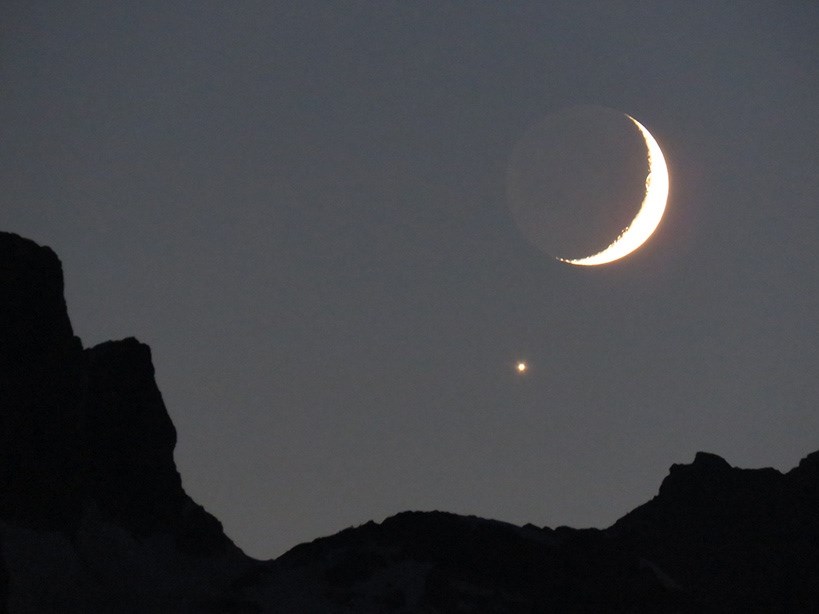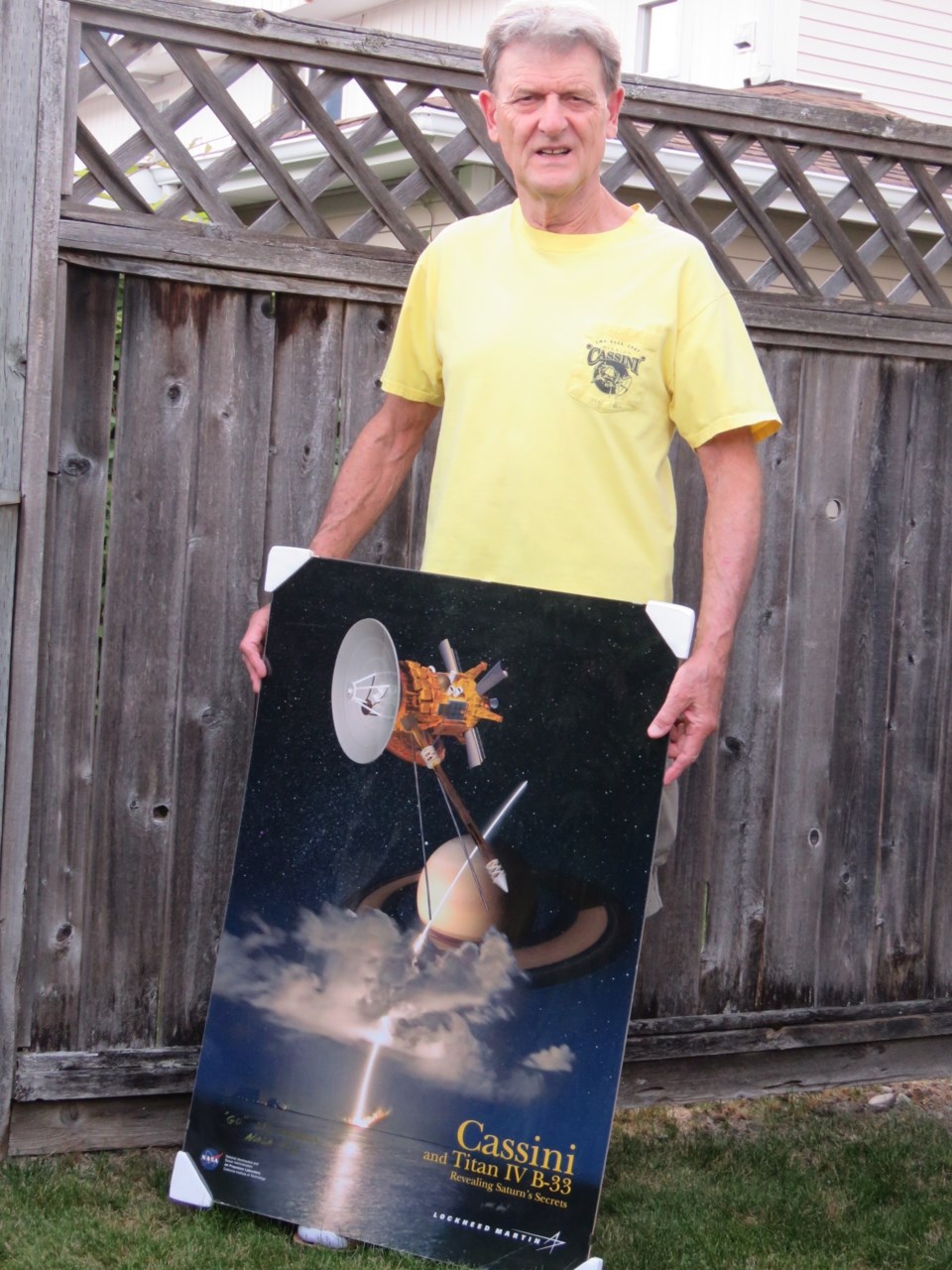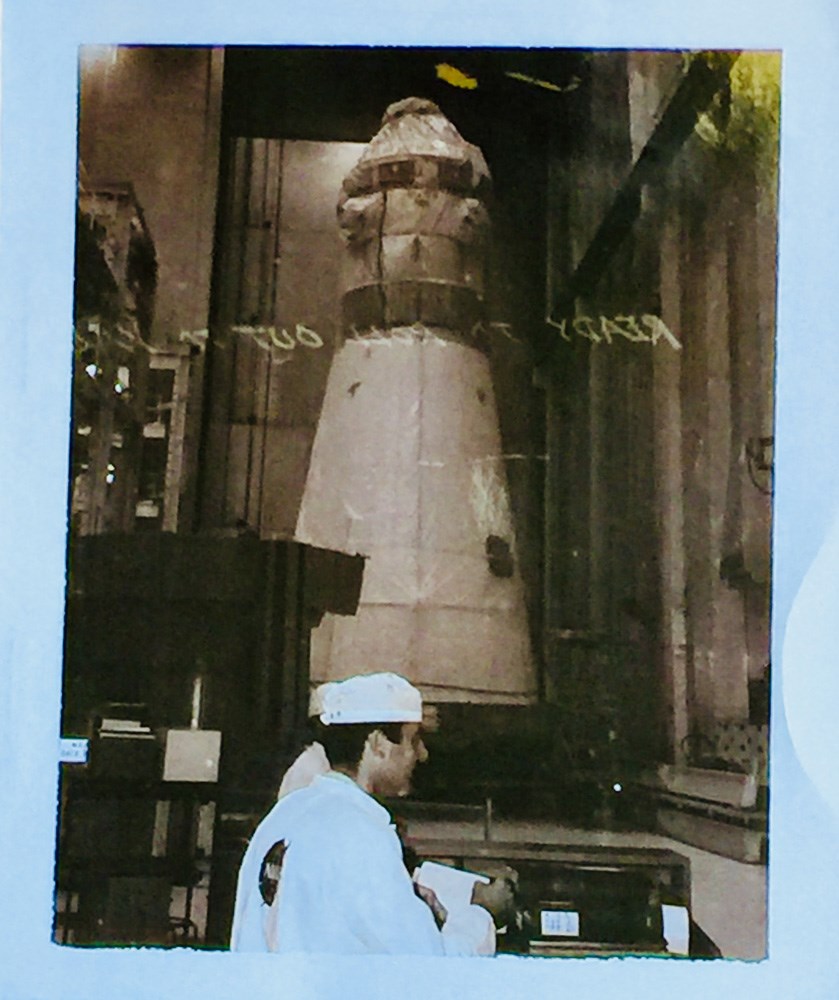When Jim Meyer stares up at the stars above Squamish, it is with more than just natural wonder.
The Squamish resident has a deeper understanding than most about the cosmos and what it takes to explore space.
Meyer was an engineer with the National Aeronautics and Space Administration (NASA) for almost four decades before retiring and moving — for at least part of each year — to the district 17 years ago.Ìý
His was a stellar career that included, when he was just 24 years old, working on the Apollo 7 mission, the October 1968 spaceflight that was the first of the Apollo missions to carry a crew into space.
Meyer is giving a presentation,Ìý "Impossible dream career" at the Sea to Sky Gondola on Sept. 8 that will highlight some of the approximately 165 missions that he was apart of.
The Squamish Chief caught up to the engaging Meyer for a chat about his career, how he landed in Squamish and his upcoming talk.
What follows is an edited version of that conversation.
Ìý
Q: How is Squamish for stargazing?
A: We just love it! One of my regrets is that when I was so busy launching and working all these missions — working six days and 12-hour shifts — and carrying on with family and that whole routine — I didn't really get into astronomy. So now I am trying to make up for it. Jupiter has been very dominant, and you can see Saturn real well. About an hour after everyone is in bed, Mars comes popping up. Mars is the closest it has been since 2003 when we launched Spirit and Opportunity. It is worth it to see it in the middle of the night. It will be brighter than Jupiter soon. On July 27, it is what is called the Mars Opposition, when Mars, Earth and the Sun line up in space.

Q: When, over the years, countries have cut back on space programs, often due to the economy, what is your take on that? Are these missions bigger than economy and important to our global development?
A: In terms of practical things that have come out of the space program — there are lots of things.
You know that Global News weather satellite you see on TV? How many Canadians know that is a NASA launched weather satellite over the equator? They stay at a fixed point above the earth, and you can rotate them. Another big benefit is GPS. A lot of people live by GPS when they travel. That was an air force funded program.Ìý
Velcro is another example. Velcro was developed very early on to attach things in zero gravity. Then, with electronics, because the requirement for things to be as light as possible to get the most out of orbit, the whole electronic field saw a lot of things evolve.
Unfortunately, most people don't have the right perspective. If they don't hear or see a launch with astronauts, they don't think anything is going on. But the last two years at the Kennedy Space Center and Cape Canaveral have been the busiest in years, but people say, "Oh, what happened to NASA? We never hear anything."
There was a launch to Mars on May 5 from Vandenberg Air Force Base. We've got another rover coming up in 2020. We have a satellite going around Jupiter now, called Juno. There's one thing after another.
What we are in right now is a hiatus. We had the same hiatus between the manned program after the Apollo and Skylab missions [Skylab was the United States' space station that orbited the Earth from 1973 to 1979]. There was a five-year period where we didn't launch any astronauts.
ÌýThe reason we are in a hiatus is greenbacks [money]. If we had unlimited finances, we could launch a program one month and then a month or so later come up with a brand new program, but there is so much design, manufacturing, and research required for these missions that it takes time between.
Ìý
Q: Can you go back and tell us about your last launch at the end of your 37-year NASA career? What was that like for you?
A: I started out as the youngest at NASA, right out of school. I was working with Apollo astronauts in Houston; I had just turned 23. They threw me right in. I had to design seats for them to sit on inside of the lunar modular. It was unbelievable the responsibility they gave me — it was scary actually.
My last two missions were the Mars rovers, Spirit, and Opportunity that launched in 2003.
I had 165 missions in my career —150 unmanned and 15 manned — including all the Apollo and Skylab missions.
I equate it to graduating from college. It is a euphoric feeling. You have all these people you have been buddying around with, and you kind of hate to move on, but you know there is another life out there and you want to pursue it. That is the feeling I had. A funny thing was, I chose April 1 to retire. I was pretty much the senior guy there at the time. All the people said I picked that date because it was a joke and I wasn't really retiring! But two weeks later I was in Kauai and the next summer we were up here, in Squamish.
Ìý
Q: Do you miss the work?
A: I don't miss it because I stay in touch with it. I go back for a retirement luncheon — they call us the Grey Beards. I actually went in too for the Curiosity launch, which is the Mars rover.
I don't check what is going on every day, but I get messages and stay in tune.
I know a lot of the people who are there now, I trained a lot of them.
One of the missions of my career, by the way, was called Radar Satellite (RADARSAT-1) for this wonderful country called Canada. That was an interesting mission. You were using aircraft to do a lot of navigational surveying in the north for ships and Canada said if they had a satellite they could look at the north every 90 minutes. (It takes about 90 minutes for a satellite to go around the Earth).
So we launched RADARSAT from California.
Ìý
Q: Let's switch gears. What will you be doing up at the gondola on Sept. 8?
A: I am basically going to go over about nine of my missions — some of the highlights.
The Cassini-Huygens mission to explore the Saturnian system was my proudest mission. That is the one that lived 20 years in space. It did everything it was asked to do, including doing a deep dive last Sept. 15 into Saturn. I have some video of that mission to share. We carried the European Space Agency's Huygens Probe. It landed on Saturn and I have a video of what the Huygens Probe saw.
I have a few pictures with some of the Apollo astronauts that I will show too. I have a 49-year-old photo of me standing in front of the Apollo 11 stack. [Apollo 11 is the spaceflight that landed mission commander Neil Armstrong and pilot Buzz Aldrin on the Moon.]
Ìý
Q: Why was Cassini-Huygens your proudest mission?
A: It was the most expensive and technically advanced mission. It is the only spacecraft ever to orbit Saturn. And I just happened to get the Kennedy Space Center award for my mission as the launch operations manager. I received the exceptional achievement medal.
Watch for more information on Meyer's Sept. 8 talk at the gondola at .

Ìý



